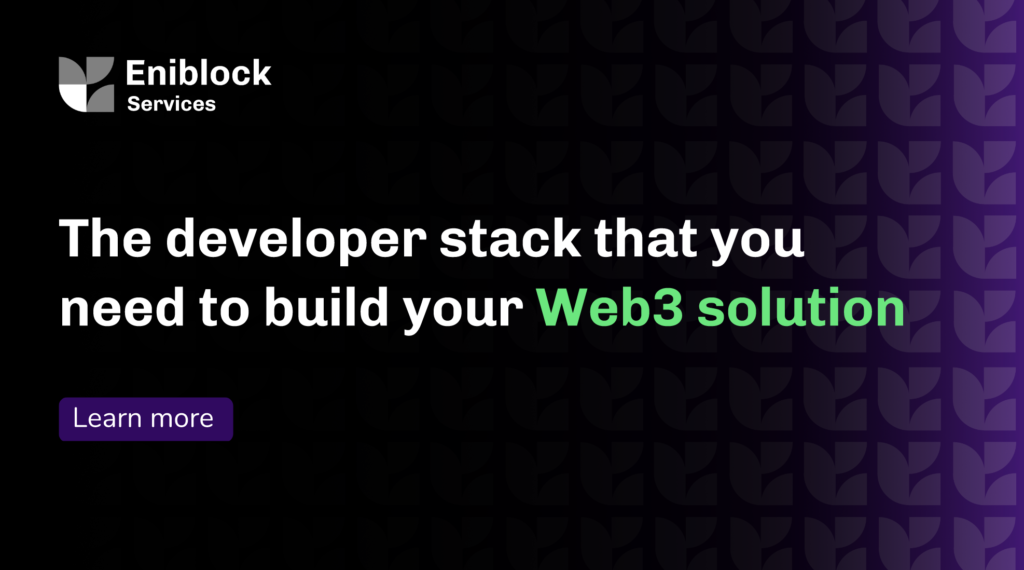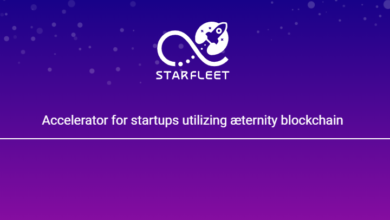

Despite the rise of Bitcoin and Ethereum, along with the emergence of new categories like DeFi, NFTs, GameFi and DAOs, web3 developers represent less than 1% of the 31.1M software developers globally.
So why is there a web3 developers shortage crisis? On one hand, the tools and infrastructure available to web3 developers are much less robust than that of web2. This simply makes it more difficult to get started building, experimenting, and deploying in web3. That’s all quickly changing however, as the number of monthly active web3 developers hit all-time highs at the end of 2021.
However, to support and simplify the entire web3 developer journey, an ecosystem of web3 tools and stack is being built, which will ultimately help unlock the next stage of web3 growth and innovation.
In this blogpost, we’ll explore the growing web3 developer stack.
Building in Web2 vs Web3
Software development is the process of building computer programs. There are three main components to a given program:
- The front-end (what users interact with)
- The back-end (what users don’t see)
- Database (where critical data is stored)
The front-end that a typical user interacts with through a mobile or desktop browser is basically the same in web2 and web3.
It’s under the hood where web2 and web3 differ. The backend frameworks and types of databases that make web3’s defining characteristic — user-defined ownership — possible are new and unique.
Where web2 applications largely rely on centralized databases, web3 applications are built on decentralized databases (blockchains). This requires entirely new backends and new primitives like wallets.
The tools that aid in the creation, deployment, and maintenance of web2 applications are incredibly developer-friendly, thanks to decades of cumulative development. Out of the box solutions, mature infrastructure, shared code libraries, and easy to use frameworks largely make building in web2 effortless.
Web3 on the other hand still requires specialized expertise to interface with complex infrastructure and commonly involves many redundant processes given that the stack is less developed, leaving teams to have to reinvent the wheel. That said, the tooling that will help onboard the next million web3 developers is rapidly improving.
Let’s take a look at the evolving Web3 developer stack layer by layer.
- Layer 1 – Protocols
- Layer 2 – Nodes
- Layer 3 – APIs
- Layer 4 – Platforms
- Layer 4 – dApps
Web3 stack layer #1: Protocols or network layer
At the base of the Web3 technology stack is the blockchain network layer. While Web2 applications rely on centralized databases, Web3 applications are built on top of blockchain architectures for trustless and permissionless access. Blockchain protocols are the foundation of the Web3 stack, without them, we can’t talk about Web3 and all of the layers on top of them become irrelevant. The first decision any web3 developer has to make is which blockchain protocol to build on. When picking a blockchain network for building decentralized applications (dApps), developers have two primary choices: Ethereum Virtual Machine (EVM)-compatible blockchains and Non-EVM-compatible blockchains.
EVM-based blockchains, such as Ethereum, use the EVM to execute smart contracts and facilitate the creation of decentralized applications (dApps). Non-EVM blockchains, on the other hand, do not use the EVM and may have different architectures and features. Some examples of non-EVM blockchains include Bitcoin, Litecoin, and Monero.
Web3 stack layer #2: Blockchain interaction layer or nodes
The next thing a developer needs to figure out is how their application will ultimately interact with the underlying blockchains. This is where nodes come into play. This layer allows developers to communicate with blockchains. Essentially, nodes are pieces of software that connect with other nodes on the same chain. As such, nodes enable you to speak with the chain (the blockchain network) and access its data.
Web3 stack layer #3: APIs layer
Application programming interface (API) is a set of definitions and protocols for building and integrating apps. Or, in the case of blockchains, dApps. It offers a neat way for a piece of software to interact with other pieces of software. Moreover, a proper set of APIs contributes to consistent coding in a stable environment. Fortunately, in 2022, there are several reputable Web3 API providers, such as Eniblock providing NFT, Mint, Redeem, Wallet APIs among others. APIs are the Web3 tech stack layer that developers should interact with.
Web3 stack layer #4: Platform layer
Looking at the legacy Web2 systems, you have several development platforms. For instance, there are platforms such as Amazon Web Service (AWS). But when it comes to Web3, Eniblock can be your platform of choice. Without a platform, you need to run your own backend in order to use APIs. Therefore, a platform is essentially an end-to-end experience. A proper Web3 platform provides you with all the necessary tools to get from an idea to a working dApp.
To learn more about Eniblock Platform, feel free to get in touch with us.Speak to our team
Web3 stack layer #5: dApps layer
Finally, we’ve reached the top layer of the Web3 tech stack – Web3 applications. This layer ties all of the above layers into specific web3 uses. NFTs, DAOs, DeFi, and gaming each have their own bespoke developer solutions. With that in mind, you may use Eniblock to create a DeFi dashboard, an NFT marketplace, a wallet and other types of dApps.
Closing thoughts
The protocols, infrastructure, and developer tools mentioned above make up the nascent, yet evolving web3 developer stack. The modular and interoperable nature of web3 means that the stack can be combined in endless ways to create new and interesting applications. While the framework and layers we highlighted will likely remain unchanged, we continue to see new developer tooling emerge and expect the entire stack to evolve dramatically in the coming years.



